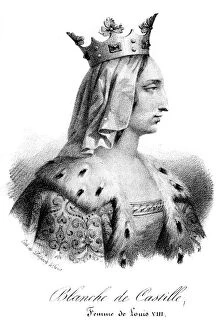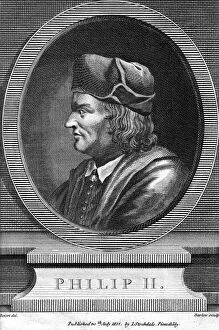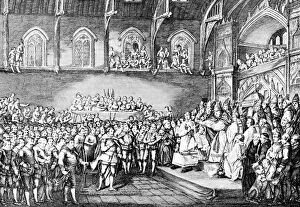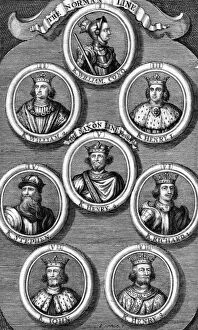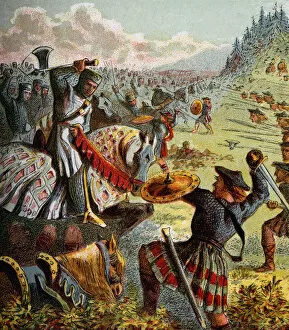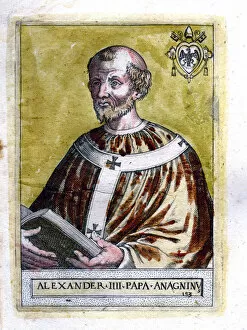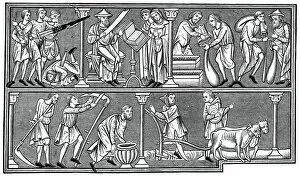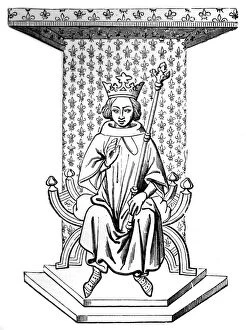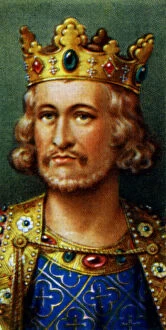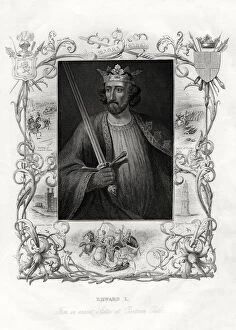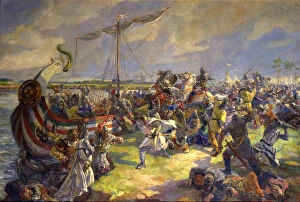Thirteenth Century Collection (#84)
Step back in time to the thirteenth century, a period of great cultural and artistic achievements
For sale as Licensed Images
Choose your image, Select your licence and Download the media
Step back in time to the thirteenth century, a period of great cultural and artistic achievements. The Hereford Mappa Mundi, created in 1285 by Richard de Bello, offers a fascinating glimpse into the medieval world with its intricate depiction of geography and biblical events. Meanwhile, St Elizabeth of Hungary can be seen spinning wool for the poor in a beautiful painting from 1901, showcasing acts of charity during this era. Dante's Divine Comedy comes alive through Domenico di Michelino's illuminating masterpiece from 1464-1465. This captivating artwork brings Florence and its literary genius to life as Dante embarks on his epic journey through Hell, Purgatory, and Heaven. Traveling across continents, we encounter the Page from the Dresden Codex—a Maya manuscript that reveals their advanced knowledge of astronomy and mathematics. In contrast, Matthew Paris's Map of Great Britain provides an insight into medieval cartography with its detailed representation of rivers and towns in southern England and Wales. Delving further into religious manuscripts, a French Bible dating back to 1280-1300 showcases an exquisite leaf opening The Book of Nehemias. Its delicate calligraphy transports us to a time when books were meticulously crafted by hand. Artistic expressions extend beyond Europe as Alexa Petrov's portrayal of Saint Nicholas of Lipna takes us to Russia in 1294. This stunning piece captures both spiritual devotion and artistic skill. In architectural wonders like Rievaulx Abbey or Chirk Castle—both captured beautifully by unknown artists—we witness grandeur intertwined with history. These structures stand as testaments to the power dynamics prevalent during this era. Finally, we find ourselves immersed in frescoes within Anagni Cathedral's crypt—an Italian treasure adorned with vibrant colors that tell stories lost over centuries but now rediscovered thanks to restoration efforts. As we reflect on these glimpses into thirteenth-century artistry and culture, we are reminded of the rich tapestry that shaped our world.

